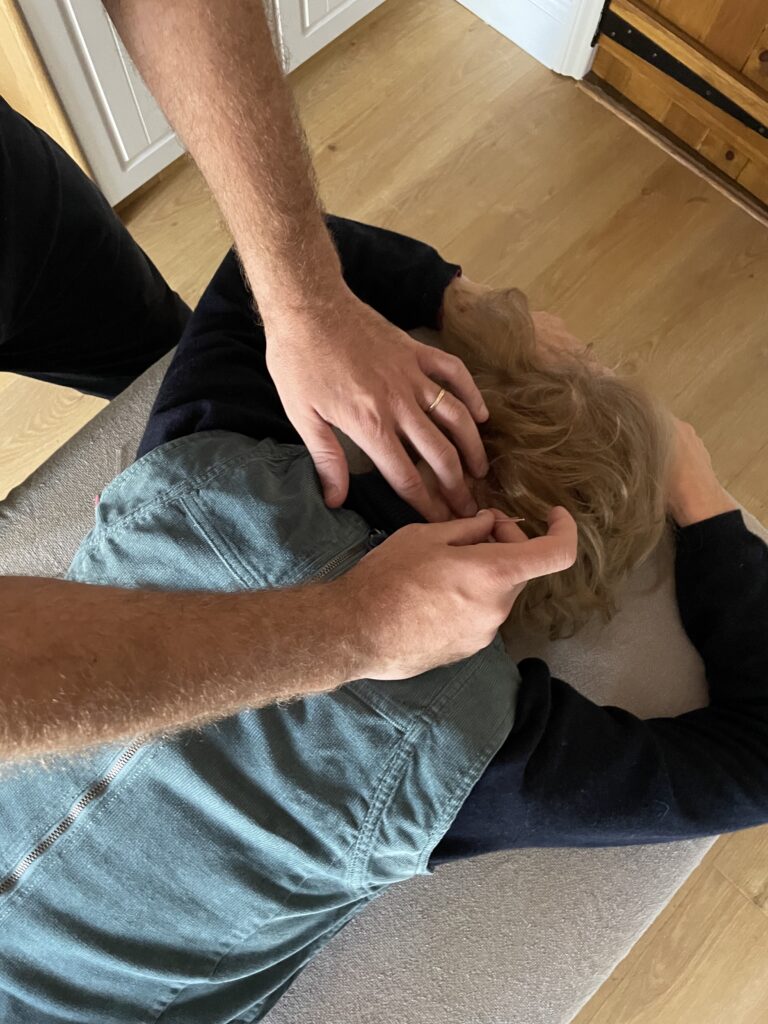Guests would often like to know what is the difference between dry needling and acupuncture. It is a fair question too, as if you were to just look at a photo of both treatments you would struggle to determine the difference in the practices, as both use the same stainless-steel needle that is inserted into the skin. It is the theory and clinical reasoning behind the needle placement that is different.
Dry needling is concerned with the identification of trigger points, what you may know as a ‘knot’ within the muscle, which causes pain. It was hypothesised that the response from a needle entering the most hypersensitive spot within a muscle would elicit a response that is highly effective at easing these taut bands of musculature. The response to this treatment is almost immediate with many guests feeling a heaviness in the muscle afterwards. This heaviness is not dissimilar to how you may feel after a workout. The muscle has reacted to the needle by releasing endorphins and other muscle reactants, the body has driven blood supply to the area, driving nutrients in that help to repair the muscle, and driving inflammatory mediators out
How acupuncture differs
In acupuncture there is a belief that the body has a natural flow of energy called Qi. The energy moves through channels called meridians. These channels and this energy can get blocked causing pain and discomfort and these blockages can lead to a variety of other symptoms occurring too. The ancient Chinese practice of acupuncture helps remove the blockage of energy. The practitioner will place the needles along the traditional Chinese meridians often away from the site of pain, with the main purpose being to alter the flow along the meridian rather than targeting the point that is sore.
This altering of the flow of Qi is the primary difference between acupuncture and dry needling as dry needling is not intended to treat issues with Qi or release toxins from the body through natural cleansing of the lymphatic system as acupuncture does. Typically, dry needling follows evidence-based guidelines, recommended trigger points, and dosages for the treatment of specific conditions.
Acupuncture is not so selective and thus, can cure a wide range of disorders at the same time including the treatment of migraines and headaches, chronic pain including neck, knee, back as well as arthritis. It can also be used to help speed up recovery and boost immunity.




